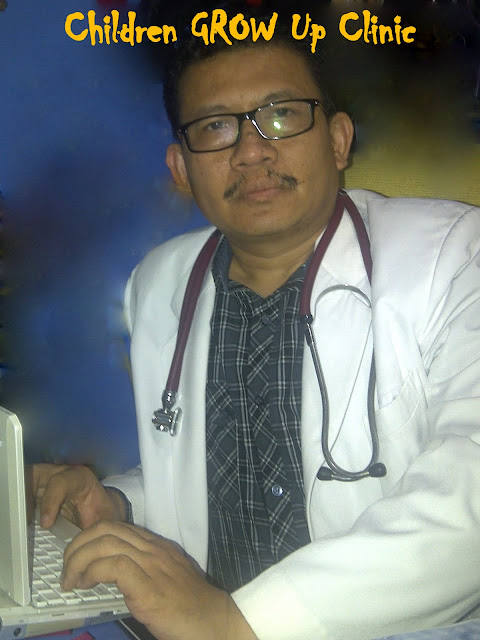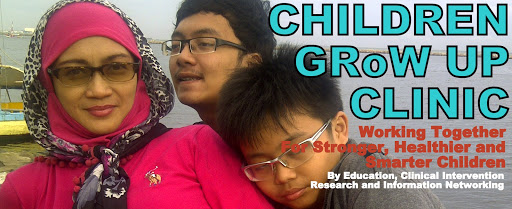ABSTRACT I: Childhood diet and cardiovascular risk factors.
Turck D.
Journal: Bull Acad Natl Med. 2011 Mar;195(3):487-98. Article in French.
Abstract
Atherosclerosis begins during childhood. A strong relationship has been shown between the prevalence and extent of asymptomatic atherosclerosis and cardiovascular risk factors such as elevated body mass index, blood pressure and plasma lipid concentrations, starting in childhood. These risk factors are influenced by genetic predisposition, but also by environmental factors, and particularly diet. The Nutrition Committee of the French Pediatrics Society of Pediatrics has reviewed the scientific basis of dietary recommendations for children, in order to limit risk factors and thereby to reduce the risk of cardiovascular disease in later life. This review focuses on the effects of prenatal nutrition; the beneficial effects of breast-feeding on cholesterolemia, blood pressure and corpulence in later life; the impact of dietary lipids on plasma lipid concentrations; the effects of salt and potassium intake on blood pressure; and the relation between lifestyle and corpulence
Source: Unité de gastro-entérologie, hépatologie et nutrition, Département de Pédiatrie, Hôpital Jeanne de Flandre, Faculté de médecine, Université Lille
ABSTRACT II: Atherosclerosis: a nutritional disease of childhood.
Berenson GS, et al. Show all
Am J Cardiol. 1998 Nov 26;82(10B):22T-29T.
Abstract
The development of coronary atherosclerosis begins in childhood. A clear relation between diet and cardiovascular disease risk has been demonstrated. Findings from the Bogalusa Heart Study indicate that most children still exceed national recommendations for intake of total and saturated fat. In addition, children’s mean total energy intake is greater than energy expenditure, contributing to the high prevalence of obesity beginning in childhood. Even in childhood, obesity often occurs with other risk factors for cardiovascular disease, such as increased blood pressure, adverse changes in serum lipoproteins, and hyperinsulinemia. This clustering of risk factors has been linked to acceleration of atherosclerotic lesions in the coronary arteries of young individuals. Decreasing the incidence of coronary artery disease in mid and late life necessitates healthy habits in nutrition and lifestyle in early life. Public health measures to favorably alter lifestyle can have a major impact on heart disease prevention and should be pursued vigorously.
Source: Bogalusa Heart Study, Tulane University Medical Center, New Orleans, Louisiana.
ABSTRACT III: Pediatric aspects of lipid-induced atherogenesis.
Kannel WB.
Journal: J Am Coll Nutr. 1984;3(2):139-46.
Abstract
There is a need to protect our young from an atherogenic way of life. Atherosclerosis and its precursors have their onset in childhood. Correctable risk factors have been identified that have been shown to exert greater impact early in life than later. Optimal levels of these risk factors for children are being established. The rise in serum lipids, blood pressure, body fat, and blood sugar observed in transition from childhood to adult life is neither inevitable nor desirable. Cardiovascular disease in adults may well begin in childhood with medical trivia such as a tendency to obesity, moderate lipid aberrations, blood pressure elevation, lack of exercise, and the cigarette habit. Recent evidence continues to emphasize blood lipids in atherogenesis. A large amount of cholesterol in the high density lipid (HDL) fraction is protective while the cholesterol in the low density lipid (LDL) is atherogenic. Optimal total cholesterol/HDL cholesterol ratios are in the vicinity of 3.5, corresponding to half the adult average risk in the United States. Worldwide evidence suggests that adult cholesterol values of 180-200 mg/dl are associated with both a low coronary heart disease (CHD) mortality and favorable overall health. In order to achieve this, 140 mg/dl values are needed in children whose blood lipids tend to track into adult life. The rise in serum lipids and deterioration in the LDL/HDL ratio in transition from childhood to adult life seems preventable through hygienic means in childhood when faulty life-styles that promote lipid-induced atherogenesis are conditioned.
ABSTRACT IV: Prospects for prevention of atherosclerosis in the young.
Authors: Kannel WB.
Journal: Aust N Z J Med. 1976 Oct;6(5):410-9.
Abstract
There appears to be a need to protect our young from an atherogenic way of life. The average male child today has one chance in three of a cardiovascular catastrophe before age 60. Atherosclerosis and the conditions which predispose appear to have their onset in childhood. Correctable precursors of cardiovascular disease have been identified, and their contribution to risk has been estimated not only for adults but for college students as well. An analysis of the combined impact of atherogenic risk factors indicates that they exert greater force early in life than later. Although the optimal time to begin prophylaxis is not established, there is evidence to suggest that measures instituted late in life when lesions are advanced is of only limited value. Prevention of atherosclerosis is best viewed as a family affair since the propensity to disease and contributing factors tend to be shared by family members. It is also difficult to implement effectively preventive measures which include dietary changes, weight control, exercise and restriction of cigarettes for one family member without involving the rest of the family. Optimal levels of the correctable precursors of cardiovascular disease are not established for children. However, the rise in serum lipids, blood pressure, weight and blood sugar observed in transition from childhood to adult life is not inevitable, or desirable. Paediatricians can alter the appalling cardiovascular mortality statistics by not allowing the process or the habits and conditions which promote it to reach an irreversible stage. Cardiovascular disease may well begin in childhood with “medical trivia” such as a tendency to obesity, moderate cholesterol and blood pressure elevations, lack of exercise and the cigarette habit. In some respects a heart attack at age 45 can be regarded as a failure of the paediatrician. Awaiting proof of the efficacy of the indicated prophylactic measures is not acceptable since this will be a long time in coming. We must learn how to correct risk factors effectively in childhood as soon as they appear. We must establish goals based on optimal as distinct from usual levels of risk factors. Paediatricians’ resolve about prevention of atherosclerosis in childhood needs to be strengthened and we must develop a sense of urgency about this.
ABSTRACT V: Risk factors for atherosclerosis in young individuals.
Authors: Misra A.
Journal: J Cardiovasc Risk. 2000 Jun;7(3):215-29.
Abstract
Atherosclerosis starts in childhood, and is accelerated in some individuals. A cluster of clinical and biochemical factors constitute the risk profile for many of them, perhaps most important being metabolic insulin resistance syndrome. Insulin resistance and its components for children and adolescents, especially obesity and dyslipidemia, are generators of hypertension, glucose intolerance and complications of atherosclerosis in adulthood. Some individuals are genetically predisposed, particularly those with the family history of such disorders. For many subjects, there is ‘tracking’ of metabolic and lifestyle factors from early age to adulthood. Several new risk factors of atherosclerosis (e.g. level of lipoprotein (a), procoagulant state, hyperhomocysteinemia, low birth weight and adverse in-utero environment, and possibly inflammatory markers) are current and potentially future areas of research concerning children and young individuals. Definition of and research on new and hitherto not investigated factors and formulation of strategies to neutralize the known factors are of paramount importance for primary prevention of atherosclerosis. Simple and effective measures for prevention include increasing awareness of the diseases, maintenance of ideal body weight, regular physical exercise, avoidance of smoking and chewing of tobacco, eating a balanced diet, and early periodic monitoring of blood pressure and metabolic status. These measures, starting from childhood, should be applied to all and in particular to the susceptible offspring, predisposed individuals, and populations.
Source: Department of Medicine, All India Institute of Medical Sciences, New Delhi, India.
supported by
CHILDREN GRoW UP CLINIC Yudhasmara Foundation Inspirasi Orangtua, Tumbuhkan Anak Semakin Sehat, Kuat dan Cerdas
 CHILDREN GRoW UP CLINIC I Jl Taman Bendungan Asahan 5 Bendungan Hilir Jakarta Pusat 10210, phone (021) 5703646 – 44466102
CHILDREN GRoW UP CLINIC I Jl Taman Bendungan Asahan 5 Bendungan Hilir Jakarta Pusat 10210, phone (021) 5703646 – 44466102- CHILDREN GRoW UP CLINIC II MENTENG SQUARE Jl Matraman 30 Jakarta Pusat 10430, phone (021) 44466103
- email :
- http://childrengrowup.wordpress.com
WORKING TOGETHER SUPPORT FOR STRONGER, SMARTER AND HEALTHIER CHILDREN BY EDUCATION, CLINICAL INTERVENTION, RESEARCH AND NETWORKING INFORMATION. Advancing of the future pediatric and future parenting to optimalized physical, mental and social health and well being for fetal, newborn, infant, children, adolescents and young adult
LAYANAN KLINIK KHUSUS “CHILDREN GRoW UP CLINIC”
PROFESIONAL MEDIS “CHILDREN GRoW UP CLINIC”
|
Clinical – Editor in Chief :
 Dr WIDODO JUDARWANTO SpA, pediatrician
Dr WIDODO JUDARWANTO SpA, pediatrician
- email :
- curriculum vitae
- For Daily Newsletter join with this Twitter https://twitter.com/WidoJudarwanto
Information on this web site is provided for informational purposes only and is not a substitute for professional medical advice. You should not use the information on this web site for diagnosing or treating a medical or health condition. You should carefully read all product packaging. If you have or suspect you have a medical problem, promptly contact your professional healthcare provider

Copyright © 2012, CHILDREN GRoW UP CLINIC Information Education Network. All rights reserved











